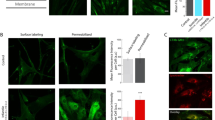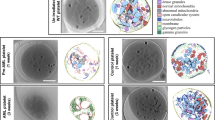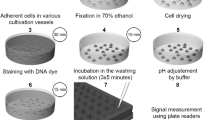Abstract
THE cytoplasm of the neutrophilic human leucocyte contains lipid granules which can be stained with Sudan Black1. On the other hand, studies with the Best Carmine stain2, with the Bauer–Feulgen method3, and with the recent periodic acid-leueofuchsin method4, have demonstrated the presence of glycogen in the cytoplasm of these cells, which has been reported to stain either diffusely or granularly. By means of the phase-contrast microscope, the stained cytoplasm has been seen to be spotted; but it was not quite clear whether the spotted appearance was due to the staining of the granules or of the inter-granular spaces4.
This is a preview of subscription content, access via your institution
Access options
Subscribe to this journal
Receive 51 print issues and online access
$199.00 per year
only $3.90 per issue
Buy this article
- Purchase on Springer Link
- Instant access to full article PDF
Prices may be subject to local taxes which are calculated during checkout
Similar content being viewed by others
References
Sheehan, H. L., J. Path. Bact., 49, 580 (1939).
Neukirch, P., Z. Klin. Med., 70, 251 (1910).
Wislocki, G. B., and Dempsey, E. W., Anat. Rec., 96, 249 (1946).
Eränkö, O., Ann. Med. Exp. and Biol. Fenn. (in the press).
Author information
Authors and Affiliations
Rights and permissions
About this article
Cite this article
ERÄNKÖ, O. Demonstration of Glycogen and Lipids in the Cytoplasm of Human Neutrophilic Leucocytes. Nature 165, 116–117 (1950). https://doi.org/10.1038/165116b0
Issue Date:
DOI: https://doi.org/10.1038/165116b0
Comments
By submitting a comment you agree to abide by our Terms and Community Guidelines. If you find something abusive or that does not comply with our terms or guidelines please flag it as inappropriate.



